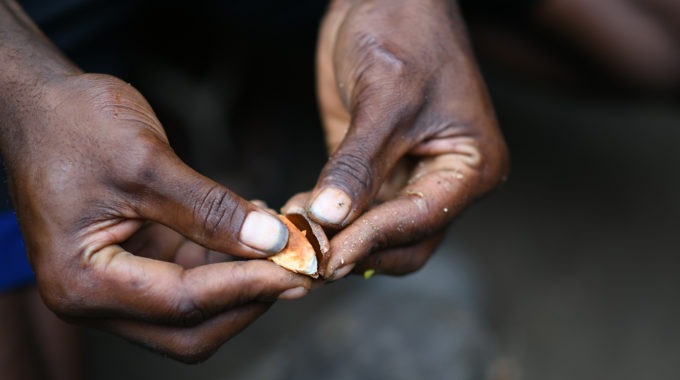Helping PNG crack galip nut industry
Griffith University researchers are helping Papua New Guinea crack the emerging galip nut industry to give marginalised women an income and encourage the planting of trees.
Professor Helen Wallace from the Centre for Planetary Health and Food Security is leading a diverse team of science, agribusiness and social research experts from both Australia and PNG, including partners from Griffith University and PNG’s National Agricultural Research Institute, to expand private sector investment in the Canarium indicum, or galip nut.
“Globally, the nut sector is growing five percent each year, driven by veganism and the health benefits of eating plant-based protein,” Professor Wallace says. “But only five types of nuts make up 90 percent of global trade. We want to add the galip nut into the mix.”

Empowering women
More than 80 percent of galip nut suppliers in PNG are smallholder farmers relying on family labour who live in very remote locations with little access to distant markets.
The galip nut looks like an almond when peeled but has a similar composition and nutritional profile to macadamias. It has a milky, smooth flavour when raw. Once dried and roasted, it develops a nutty taste and a crisp crunch. It’s possible to dry, store and ship galip nuts to overseas markets. This makes them an ideal cash crop.
Professor Wallace says that, in PNG, looking after the galip nut is traditionally women’s work. And women have really benefited from this growing industry.
“They’re involved across the supply chain, from cultivation and harvesting to processing and selling,” she says. “By scaling up the market, we’ll empower more women to take part.”
Professor Wallace led the initial project to establish a pilot factory and test a range of technologies for galip nut processing. Working with key partners in the government and private sectors, the project has seen supply triple and grow to a farm gate value of $100,000 AUD in just three years. However, more work needs to be done.

Growing interest
“Other investors have used our research to set up their own operation and start buying from farmers,” Professor Wallace says. “This means more income for thousands of PNG farmers. It also encourages people to keep native galip trees in their gardens and forests.”
Professor Wallace says the decentralised supply network makes collecting large volumes of product difficult. Her team is now testing more efficient harvest and collection systems.
“The industry will also benefit from moving towards buying nut-in-shell rather than the current arrangement,” she says. “Presently, most of the product goes to waste. This move will benefit small-scale entrepreneurs.”
Port Moresby now has a formal market. Supermarkets and duty-free stores are now selling packaged natural, roasted, peeled and flavoured products. Private investors are also cautiously but optimistically approaching the industry.
“There’s a lot of interest in the galip nut industry,” Professor Wallace says. “Many are keen to be involved in an indigenous product made in PNG with significant economic benefits for smallholders. Our job is to provide stronger evidence of the commercial viability of large-scale galip nut processing and pathways to domestic and international markets.”









